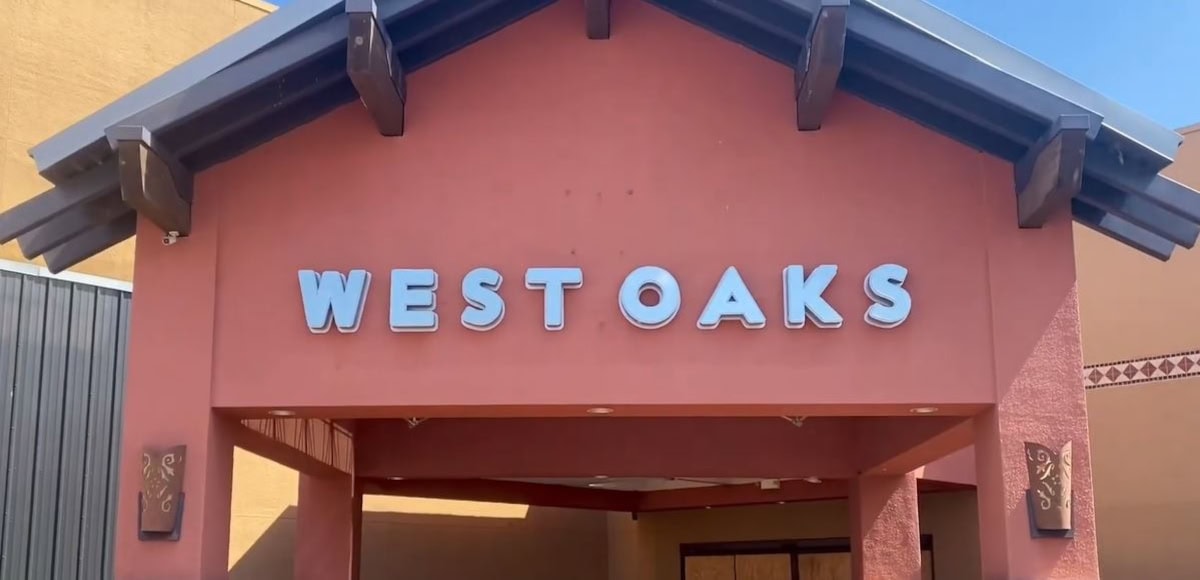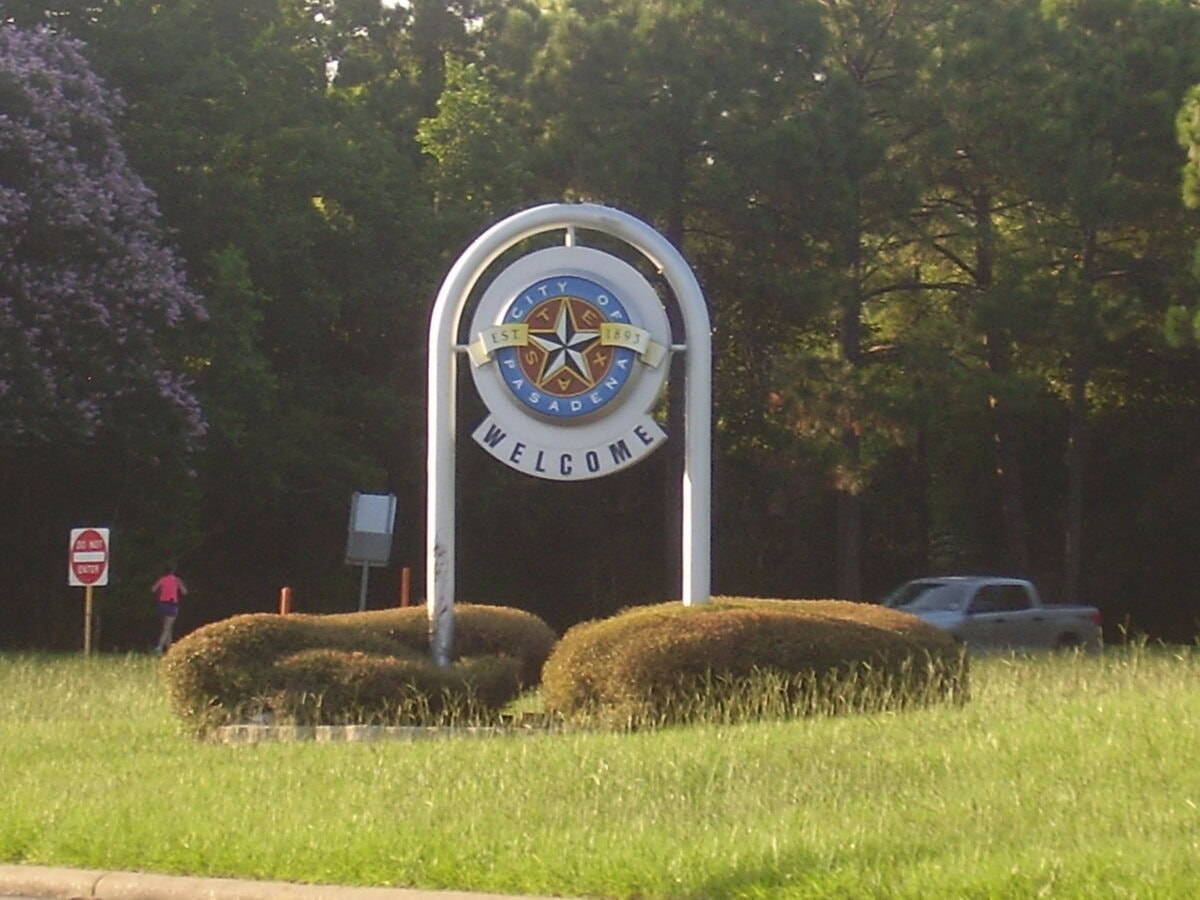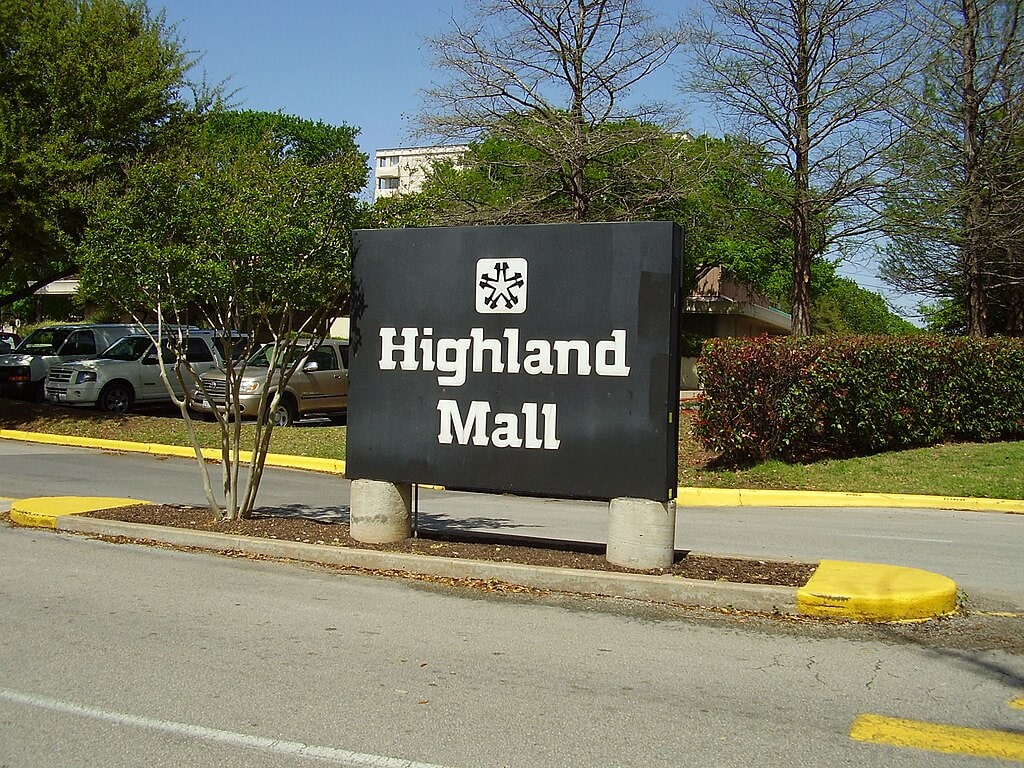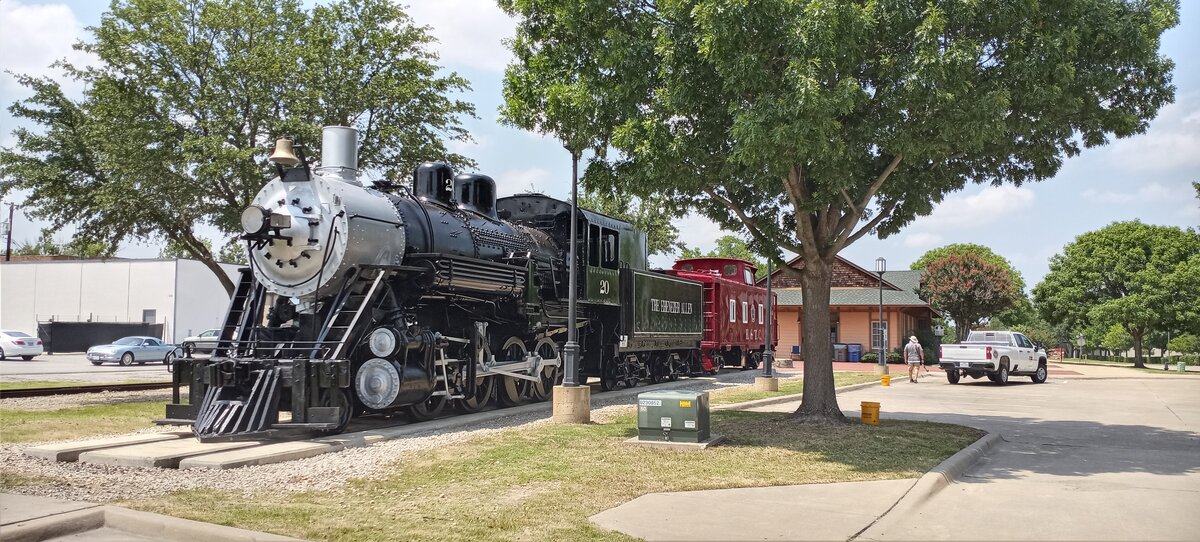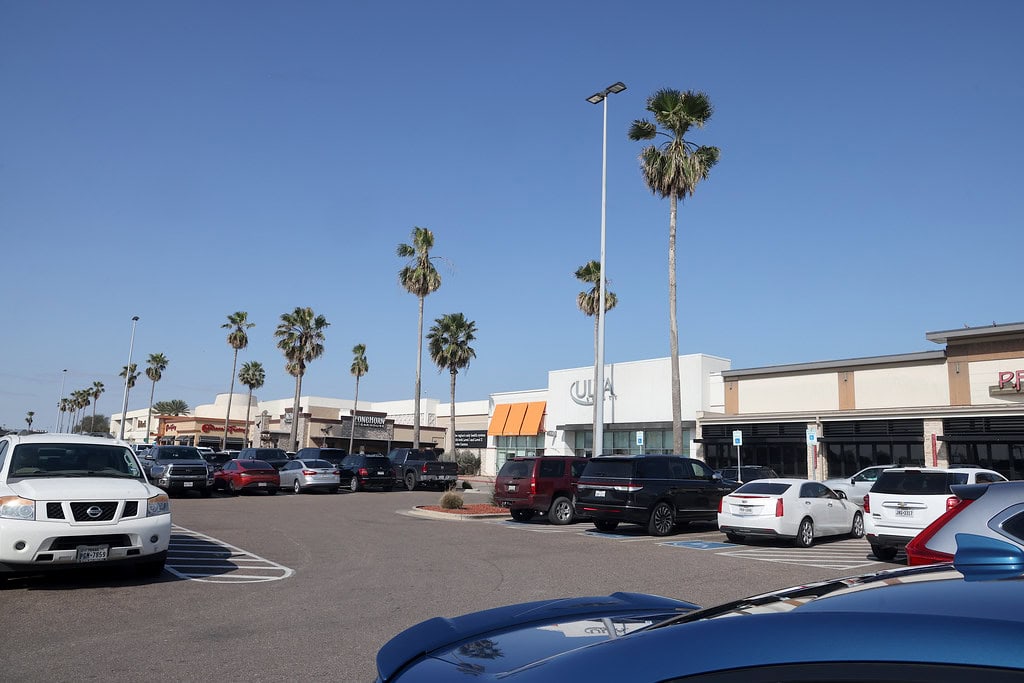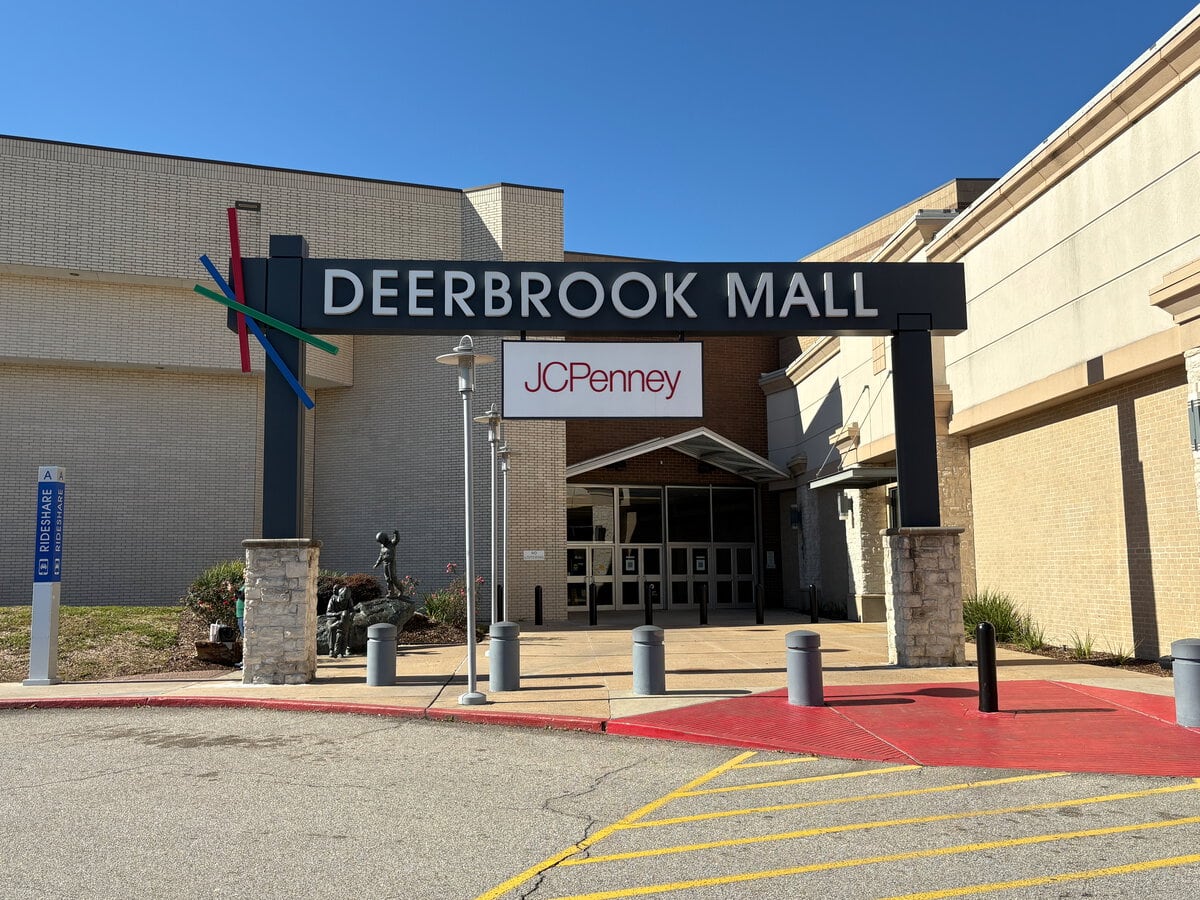Pearland, Texas: From Pear Trees to Barbecue Lines
Pearland began in the 1890s when a small settlement on the rail line south of Houston was replatted, named for its pear trees, and laid out as a modest farm and fruit orchard community.
Orchards and truck farms drew settlers but were damaged by coastal storms and freezes. Oil at the Hastings field, highway access, wetlands, rookeries, and a town meets country motto followed in time.
Today, Pearland is a commuter base for NASA and medical jobs, spread into three counties, with Black, Hispanic, Asian, and white residents, pear sculptures, a town center, airport history, and barbecue.
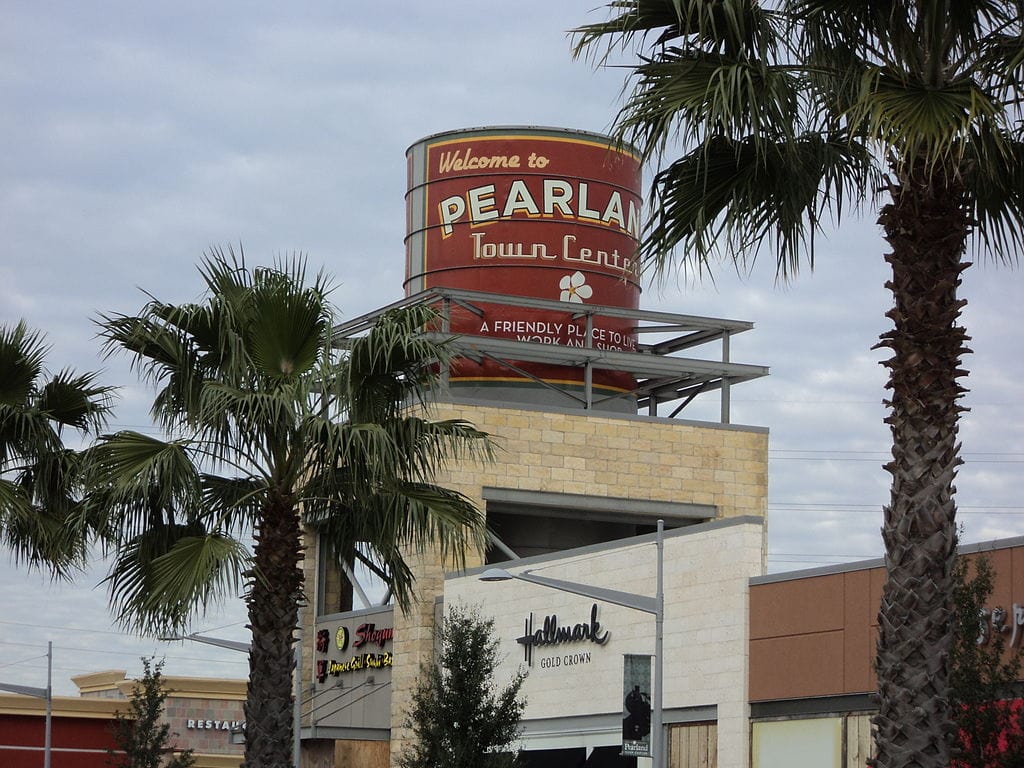
A railroad siding called Mark Belt, renamed by a Polish count for its pear trees
Pearland started as a Gulf, Colorado, and Santa Fe Railway siding in 1882 and was known as Mark Belt when a post office opened there in 1893.
In 1894, Witold von Zychlinski, a man of Polish nobility, filed a plat for a new town he called "Pear-Land" after noticing how many pear trees surrounded the settlement.
The name stuck, and Mark Belt quietly disappeared from maps.
The town's oldest park, Zychlinski Park, just off Grand Boulevard, still carries his name, a reminder that Pearland's identity is literally the product of one outsider's branding decision and a moment of inspiration triggered by fruit trees.
The "agricultural Eden" whose orchards were wrecked into a near desert
Around 1900, land companies marketed Pearland nationally as an "agricultural Eden," promising newcomers a lush belt of orchards and truck farms just south of Houston.
Early residents grew pears, figs, cantaloupes, corn, and watermelons, and the first subdivision was optimistically named Suburban Gardens.
Then the 1900 Galveston hurricane, followed by another in 1915, shredded most of the area's fruit trees and stalled the community for years. A hard freeze in 1918 finished off much of the revived citrus and fig planting.
Local histories describe a "period of desertification," when the once-promoted garden suburb looked more like windblown prairie than Eden, forcing Pearland to reinvent itself economically.
From a crossroads of 150 people to a six-figure city in one lifetime
For decades after oil arrived in 1934, Pearland's population hovered between 150 and 350, barely changing through the 1950s.
By 1965, it still counted fewer than 1,500 residents.
In 2000, the census found 37,640 people; by 2010, it had jumped to 91,252, a 142 percent increase that made Pearland the 15th-fastest-growing U.S. city among places over 10,000 people. The 2020 census recorded 125,828 residents.
By 2022, estimates put its population around 127,000, with forecasts suggesting it could reach roughly 154,000 by 2040, even as growth slows.
In other words, a town that could once fit into a large high school stadium has, within a couple of generations, turned into one of the Houston region's principal cities.
For locals who remember two-lane FM 518 and open prairie, that arc is unusually steep.
The largest city in Brazoria County quietly spills into two others
Pearland is officially based in Brazoria County, where it is the largest city by population and covers about 45.6 square miles. But its borders do not stop there.
Over years of annexations and subdivision growth, the city limits have pushed north and west so that small but significant portions of Pearland now extend into both Harris and Fort Bend counties.
That means a single drive across town can take you through three county jurisdictions without ever leaving Pearland, an unusual arrangement even by Texas standards, and one that complicates everything from school zoning to transportation planning.

Oil money, dance halls, and the Hastings field years
Oil discovered at the Hastings oilfield in 1934, just east of the Santa Fe railroad, brought serious petroleum money to northern Brazoria County.
Much of the field now falls inside modern Pearland. The boom did not immediately translate into population growth for the town, but it did reshape local nightlife.
Mid-century accounts describe Pearland in the 1930s and 1940s as lined with dance halls and beer joints serving roughnecks from the Hastings and nearby Manvel oil fields.
While the official census remained modest, the weekend crowd along Texas 35 and the Hastings community made Pearland far livelier than its headcount suggested.
A city whose motto really is "Where Town Meets Country"
Pearland's official motto, "Where Town Meets Country," is not just marketing language. West Pearland is thick with master-planned subdivisions, big-box retail, and the 288 toll lanes feeding commuters toward Houston.
East Pearland, along Main Street and older sections of FM 518, still shows what the area looked like before the boom, with older houses, fields, and remnants of past agriculture.
A Houston Chronicle writer once noted that the city's "rural roots still show" on that side of town.
Even today, former rice fields have been turned into subdivisions and RV parks, making the edge between pasture and cul-de-sac unusually sharp.
Giant painted pears were scattered around town as a civic scavenger hunt
The city has leaned into its name with Pear-Scape, a public art project that turned Pearland into an open-air gallery of oversized fruit.
The Pear-Scape Art Trail places four-foot-tall fiberglass pear sculptures, each painted by local artists, at parks, civic sites, and private venues across the city, including Delores Fenwick Nature Center, City Hall, and Pearland Town Center.
The initial project funded about twenty pears in ten locations; visitors can follow maps or digital "passports" to find them all.
It is one of the few American suburbs where a family afternoon might logically consist of driving around to locate themed, human-sized fruit tied directly to local history.
A nature center with rookeries and bald eagles off Magnolia Parkway
Just off Magnolia Parkway, the Delores Fenwick Nature Center opened in 2019 as a roughly $3 million environmental education hub for Pearland.
It anchors a broader complex of wetlands, a lake, and nearly two miles of trails that loop around water and marsh.
Birding guides note that the site includes a rookery and routinely hosts wading birds, migratory species, and even occasional bald eagles, making it an unusually rich wildlife pocket inside a fast-growing suburb.
For residents used to freeway commutes and cul-de-sacs, it is a reminder that Pearland still sits in the low, water-driven Western Gulf Coastal Plain.
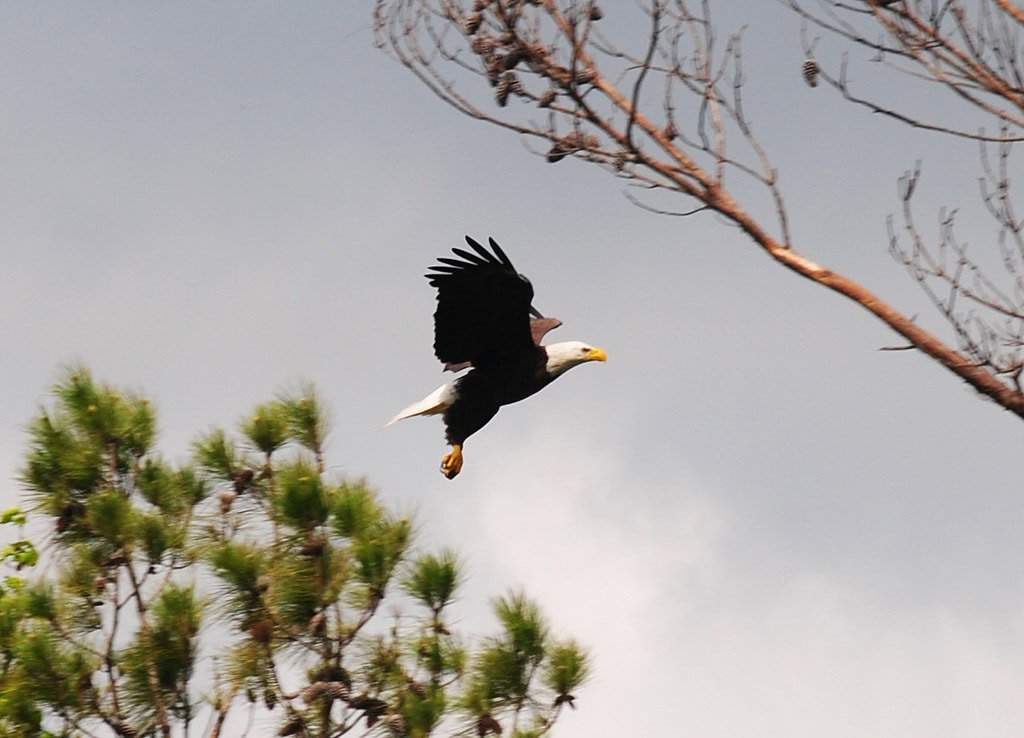
A commuter city built around NASA, the Texas Medical Center, and med-tech
Pearland's modern economy is tightly wired into Houston's big institutions.
City and census data show that a majority of Pearland's labor force commutes daily to the Texas Medical Center and other major employment districts, and many residents work at NASA's Johnson Space Center.
At the same time, Pearland has attracted healthcare and life-science firms to its own business parks.
Kelsey-Seybold Clinic built a 170,000-square-foot administrative campus in Shadow Creek Ranch, projected to house about 800 employees.
Merit Medical Systems opened an approximately 118,000-square-foot R&D and manufacturing facility north of Shadow Creek Ranch, and Abbott (through Cardiovascular Systems) operates another sizable medical device facility nearby.
A racial and cultural flip that is reshaping what "suburb" means
In 2000, Pearland's population was about 84 percent white and roughly 16 percent Hispanic or Latino, with small Black and Asian communities.
By the early 2020s, DataUSA estimates show non-Hispanic whites at about 36 to 37 percent of residents, with Black, Asian, and Hispanic communities each accounting for significant shares of the population.
That shift is visible in development: a new "Pearland Asian Town," between Oak Road and Broadway, is being built specifically to serve a growing Asian community, with planned Korean barbecue, sushi, hot pot, and a hoped-for Asian supermarket similar to Katy's H Mart-anchored center.
For a once-sleepy railroad town, the speed and breadth of this demographic reversal is remarkable.
A "downtown" stacked vertically at a suburban highway interchange
Instead of a traditional courthouse square, Pearland's de facto downtown is a 143-acre mixed-use complex at Highway 288 and Broadway: Pearland Town Center.
The development combines large-format retail with a four-story, 110-room Courtyard by Marriott hotel, about 234 high-end apartments, and tens of thousands of square feet of second-floor office space, all arranged around a central park and pavilion.
In July 2024, "Good Morning America" chose Pearland as its "Main Street USA" feature, broadcasting live segments from the city and spotlighting local businesses, with Town Center as the visual backdrop.
For a suburban community, that is an unusually vertical, orchestrated version of main street.
An airport was briefly annexed, then kicked back out of the city
Pearland Regional Airport, formerly Clover Field, is a privately owned public-use airfield just east of the city with a 4,313-foot concrete runway and roughly 450 acres of land.
In November 2017, Pearland annexed the airport tract, known as "Area L," bringing it inside the city limits.
Just a few months later, after pushback over several annexations, the city council voted to de-annex those areas, and the airport reverted to unincorporated status effective March 26, 2018.
Nearby Skyway Manor Airport, a small turf-runway residential airpark whose owner and manager literally live on the field, continues to serve general aviation with a Pearland address.
A pop-culture export line: from 1980s punk to global pop and rap
For a city that was only incorporated in 1959, Pearland has produced a striking number of pop-culture figures. The Judy's, a late-1970s and 1980s punk and new-wave band, were formed in Pearland and became a cult Texas act.
Decades later, Megan Thee Stallion grew up partly in Pearland, attended Pearland High School, and graduated there in 2013 before becoming one of Houston's best-known rappers.
Normani, of Fifth Harmony, relocated with her family from New Orleans to Pearland after Hurricane Katrina and has maintained close ties to the area.
Together, they give a nominal bedroom community an outsized cultural footprint.
National-level barbecue in an old Pearland school cafeteria
Killen's Barbecue, now one of Texas's most closely watched barbecue destinations, operates out of a mid-century Pearland school cafeteria building across from the high school.
Chef-owner and Pearland native Ronnie Killen turned the space into a cafeteria-style smokehouse that routinely sells out of brisket and beef ribs.
On opening weekend in 2014, the restaurant reportedly went through roughly 1,500 pounds of meat in a single day. The Michelin Guide has awarded the Pearland location a Bib Gourmand, citing its quality and value.
When "Good Morning America" came to Pearland for its 2024 Main Street USA segment, one of its on-air stops for cooking tips and sauce talk was, unsurprisingly, Killen's.



